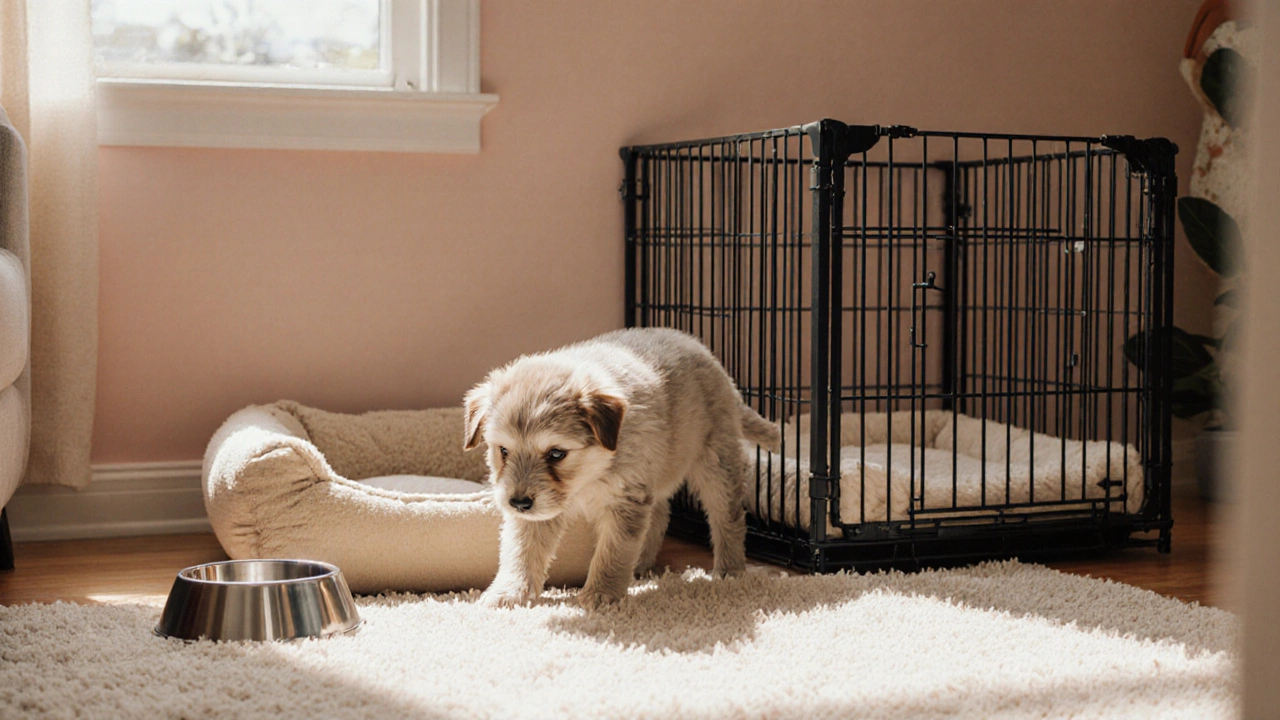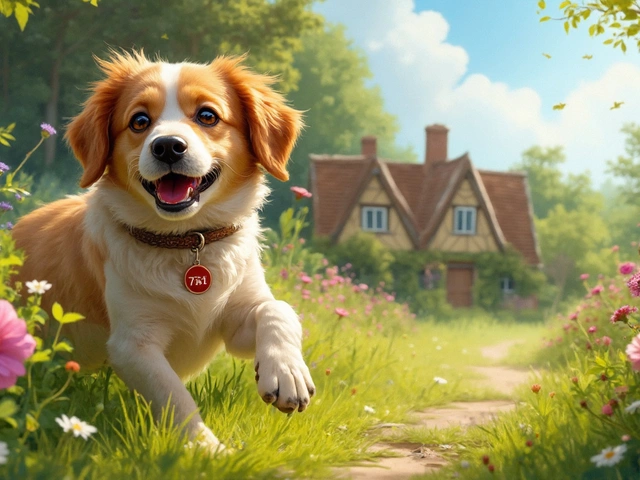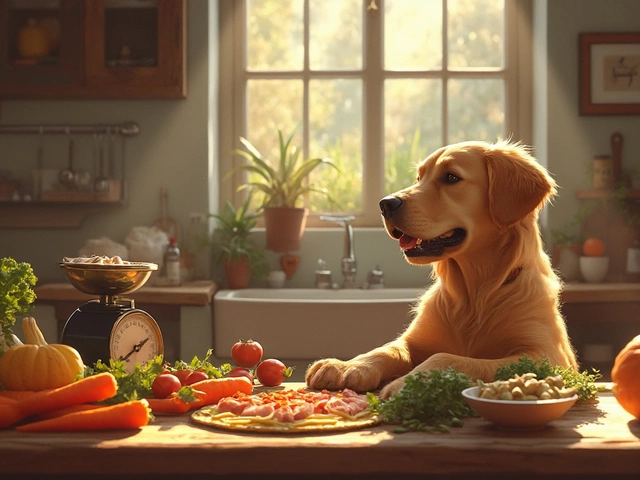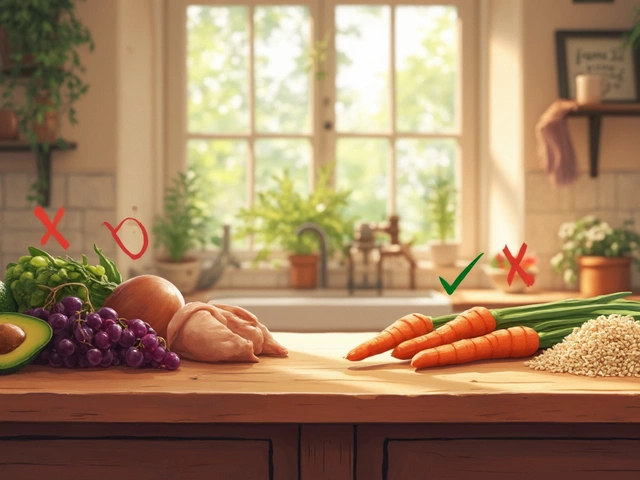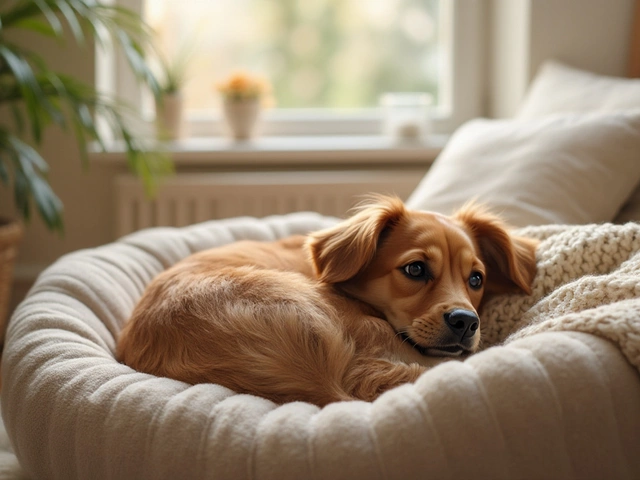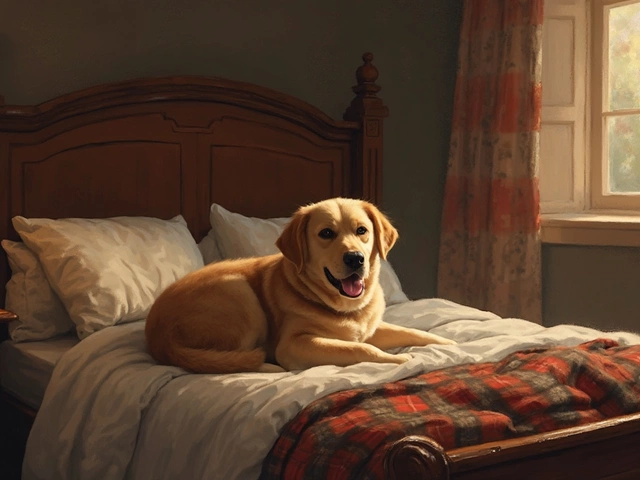Puppy Home Mistakes Quiz
Overwhelming the Puppy with Too Many New Things
New puppies thrive on routine. Create a safe, contained space to reduce stress.
Mark as LearnedSkipping the First Veterinary Visit
Schedule a vet visit within 48 hours to establish health baseline and start vaccines.
Mark as LearnedIgnoring Early Socialization
Socialize between 3-14 weeks with calm, positive experiences.
Mark as LearnedForgetting to Puppy-Proof the Home
Secure cords, remove toxic plants, and store small items out of reach.
Mark as LearnedRushing House-Training
Establish a schedule, use the same potty area, and reward promptly.
Mark as LearnedOverfeeding or Wrong Food
Feed age-appropriate puppy formula, follow portion guidelines.
Mark as LearnedAllowing the Puppy to Jump on People
Teach a polite greet with "sit" before offering affection.
Mark as LearnedNeglecting Mental Stimulation
Provide puzzle toys and short training sessions to prevent boredom.
Mark as LearnedYour Progress
0 out of 8 mistakes avoided
Bringing a new Puppy is a young dog that needs careful handling, proper nutrition, and lots of patience during the first weeks at home is thrilling, but it can also feel like stepping onto a roller‑coaster you didn’t read the safety instructions for. Most owners focus on the cute moments and forget the little things that can turn that excitement into stress for both the pup and the household. Below is a practical rundown of what puppy home mistakes to steer clear of, followed by actionable tips that keep the transition smooth and set the stage for a well‑behaved companion.
1. Overwhelming the Puppy with Too Many New Things
New puppies thrive on routine. Dumping the whole house’s smells, sounds, and people on day one overloads their senses and can trigger anxiety. Instead of opening every door and letting the puppy explore every room at once, create a safe, contained space - a designated puppy‑proof area.
- Choose a quiet corner of the living room or a spare bedroom.
- Use baby gates or a pen to limit the area.
- Place a comfortable bed, water bowl, and a crate a sturdy metal or plastic enclosure used for safe confinement and training inside the zone.
After the pup settles, gradually introduce one room at a time over several days. This measured approach reduces stress and helps the puppy learn where it’s safe to be.
2. Skipping the First Veterinary Visit
Many owners think the first vet check‑up can wait a week or two. In reality, a prompt veterinary visit a professional health examination performed by a qualified animal doctor establishes a health baseline, identifies any hidden conditions, and starts the vaccination schedule.
What to ask during that first appointment:
- Confirm the puppy’s current vaccination status and the timing for boosters.
- Discuss deworming and flea prevention plans.
- Get advice on diet, weight targets, and any breed‑specific concerns.
Leaving this step out can lead to missed vaccinations, which increases the risk of preventable diseases.
3. Ignoring the Importance of Early Socialization
Socialization isn’t just a buzzword; it’s a critical window between 3 and 14 weeks when puppies learn to trust people, other dogs, and new environments. Missing this window makes them more likely to develop fear‑based aggression later.
Don’t make the mistake of keeping the puppy isolated because you’re afraid of accidents. Instead, arrange controlled, positive experiences:
- Short walks on a loose leash a strap used to guide and control a dog during outdoor activities in a quiet park.
- Playdates with calm, vaccinated adult dogs.
- Exposure to different surfaces (grass, tile, carpet) and noises (vacuum, car horn).
Keep sessions under ten minutes, reward calm behavior, and end on a positive note.
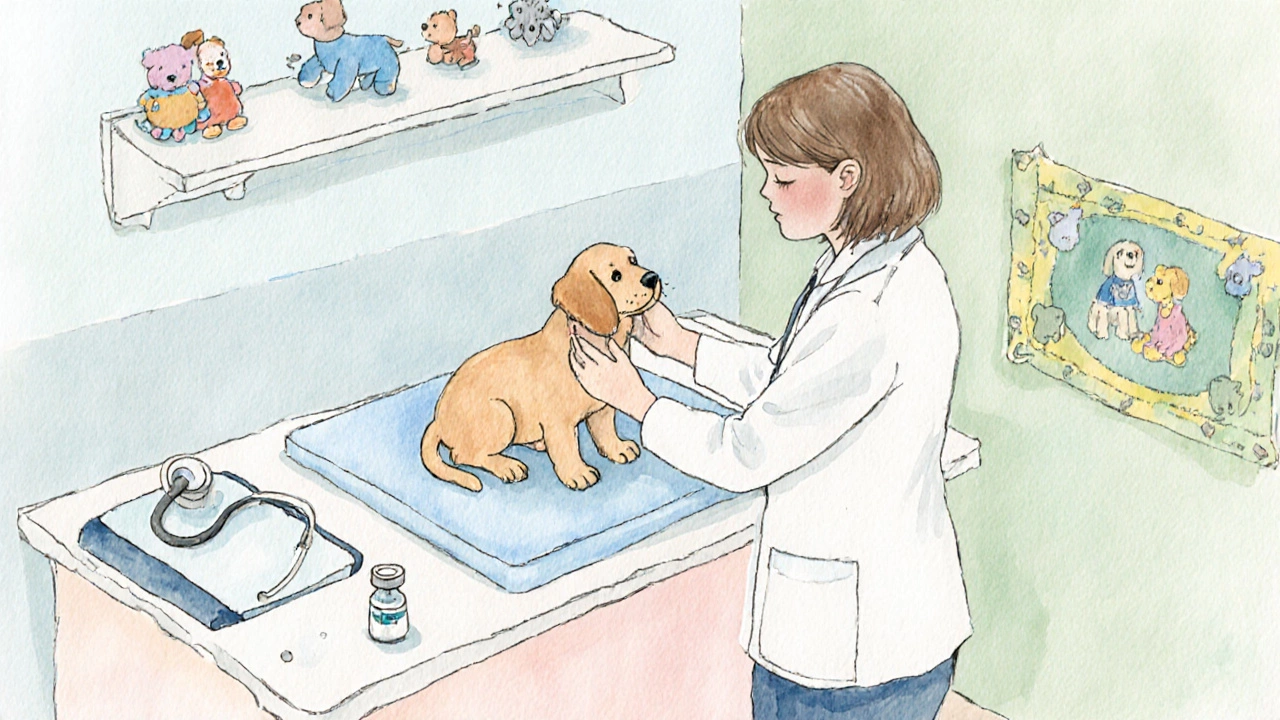
4. Forgetting to Puppy‑Proof the Home
One of the most common rookie errors is leaving electrical cords, toxic plants, or small objects within reach. Puppies explore with their mouths, and a single chew can lead to a costly vet bill.
Do a quick sweep before the pup arrives:
- Secure cords with cord covers or tape them down.
- Remove houseplants like lilies and poinsettias that are toxic to dogs.
- Store shoes, socks, and children’s toys out of reach.
- Place a chew toy a durable, safe item designed to satisfy a puppy’s need to chew in the safe area to redirect biting.
This simple audit prevents emergencies and helps the puppy learn what’s okay to chew.
5. Rushing House‑Training (Potty Training)
Many owners expect a brand‑new puppy to be toilet‑trained overnight. The reality is that puppies have tiny bladders and need a consistent schedule.
Common missteps:
- Leaving the puppy alone for long periods - they can’t hold it for more than a couple of hours.
- Not taking the pup to the same potty area designated outdoor spot where the puppy learns to eliminate each time.
- Using harsh punishment after accidents - this creates fear rather than learning.
Effective approach:
- Take the puppy out first thing in the morning, after meals, and after naps.
- Stay on a short leash to the chosen potty area and wait calmly.
- Reward with gentle praise and a tiny treat the moment they finish.
- Keep a log of times and locations to spot patterns.
Consistency beats speed.
6. Overfeeding or Giving the Wrong Food
New pup owners often think “more food equals faster growth,” but overfeeding can lead to obesity, joint problems, and digestive upset. Puppies need a balanced diet formulated for their growth stage.
Common pitfalls:
- Feeding adult dog food - it lacks essential calories and nutrients for a growing puppy.
- Giving table scraps - high in salt and fat, they can cause pancreatitis.
- Skipping regular feeding times - erratic schedules confuse digestion.
Best practice:
- Choose a reputable puppy formula with a guaranteed analysis (minimum 22% protein, 8% fat).
- Follow the manufacturer’s feeding chart based on the puppy’s weight and age.
- Divide the daily amount into three to four meals.
- Introduce fresh water at all times.
Monitor body condition weekly; you should be able to feel but not see the ribs.
7. Allowing the Puppy to Jump on People
Excitement often leads owners to let the pup jump up for attention. While it feels cute, it teaches the dog that leaping is acceptable, which becomes a nuisance as they grow.
Instead of rewarding the behavior with pets, teach a polite greet:
- When the puppy approaches, ask for a “sit” before offering affection.
- If they jump, turn your back and ignore them until all four paws are on the floor.
- Consistently repeat the rule with all family members and visitors.
Consistency here prevents a future habit that’s hard to break.
8. Neglecting the Puppy’s Need for Mental Stimulation
A bored puppy may resort to destructive chewing, barking, or digging. Mental enrichment is as vital as physical exercise.
Ways to keep the mind sharp:
- Rotate a set of puzzle toys interactive toys that challenge a dog to solve a problem for a reward to maintain novelty.
- Teach simple commands like “touch” or “stay” in short 5‑minute sessions.
- Provide safe chew items and hide treats for a scent‑search game.
These activities satisfy the puppy’s innate curiosity and reduce unwanted behavior.
Quick Checklist: Mistakes to Avoid
| Mistake | Why It Hurts | Simple Fix |
|---|---|---|
| Over‑stimulating the space | Causes anxiety and fear | Start with a confined, quiet area |
| Delaying first vet visit | Missed health issues, delayed vaccines | Schedule within 48hours of arrival |
| Skipping socialization | Increases future aggression | Introduce calm dogs and new environments slowly |
| Un‑puppy‑proofed home | Risk of poisoning, injuries | Secure cords, remove toxic plants, store small items |
| Rushing potty training | Accidents, confusion | Establish a schedule, use same outdoor spot, reward immediately |
| Wrong food or overfeeding | Obesity, growth problems | Feed age‑appropriate puppy formula, follow portion guide |
| Allowing jumping | Establishes rude greeting habit | Teach sit before affection, ignore jumps |
| Lack of mental enrichment | Destructive behavior | Rotate puzzle toys, short training games |
Next Steps After the First Week
Once the puppy settles, keep building good habits. Here’s a short roadmap for the first month:
- Week 1‑2: Focus on safe space, feeding routine, and gentle crate training. Keep vet appointment.
- Week 3‑4: Add short leash walks, introduce a second family member to the safe area, and start basic commands (sit, stay).
- Week 5‑6: Increase playtime, join a puppy socialization class, and begin grooming (brushing, nail trimming) in short sessions.
Progress at the puppy’s pace - forcing new experiences can backfire.
Frequently Asked Questions
How long should I keep my puppy in a crate each day?
Puppies can usually hold their bladder for about one hour per month of age. A 10‑week‑old puppy can stay in a crate for 2‑3 hours at most, with frequent bathroom breaks.
Is it okay to let my puppy sleep on the couch?
It’s better to keep sleeping spots consistent. Allowing the puppy on the couch early can create a habit that’s hard to break later. Use a comfortable dog bed in the same area instead.
When should I start vaccinating my puppy?
Most vets begin the core vaccine series at 6‑8 weeks of age, then repeat every 3‑4 weeks until 16 weeks. Your vet will schedule boosters based on local disease risk.
What’s the best way to stop my puppy from chewing on shoes?
Provide a variety of chew toys with different textures, rotate them regularly, and keep shoes stored out of sight. When you catch the puppy chewing a shoe, redirect to a toy and praise the switch.
How can I calm a nervous puppy during thunderstorms?
Create a safe den with a crate or under‑table hideaway, play soft music, and consider a calming jacket or pheromone diffuser. Stay calm yourself - puppies pick up on your emotions.
